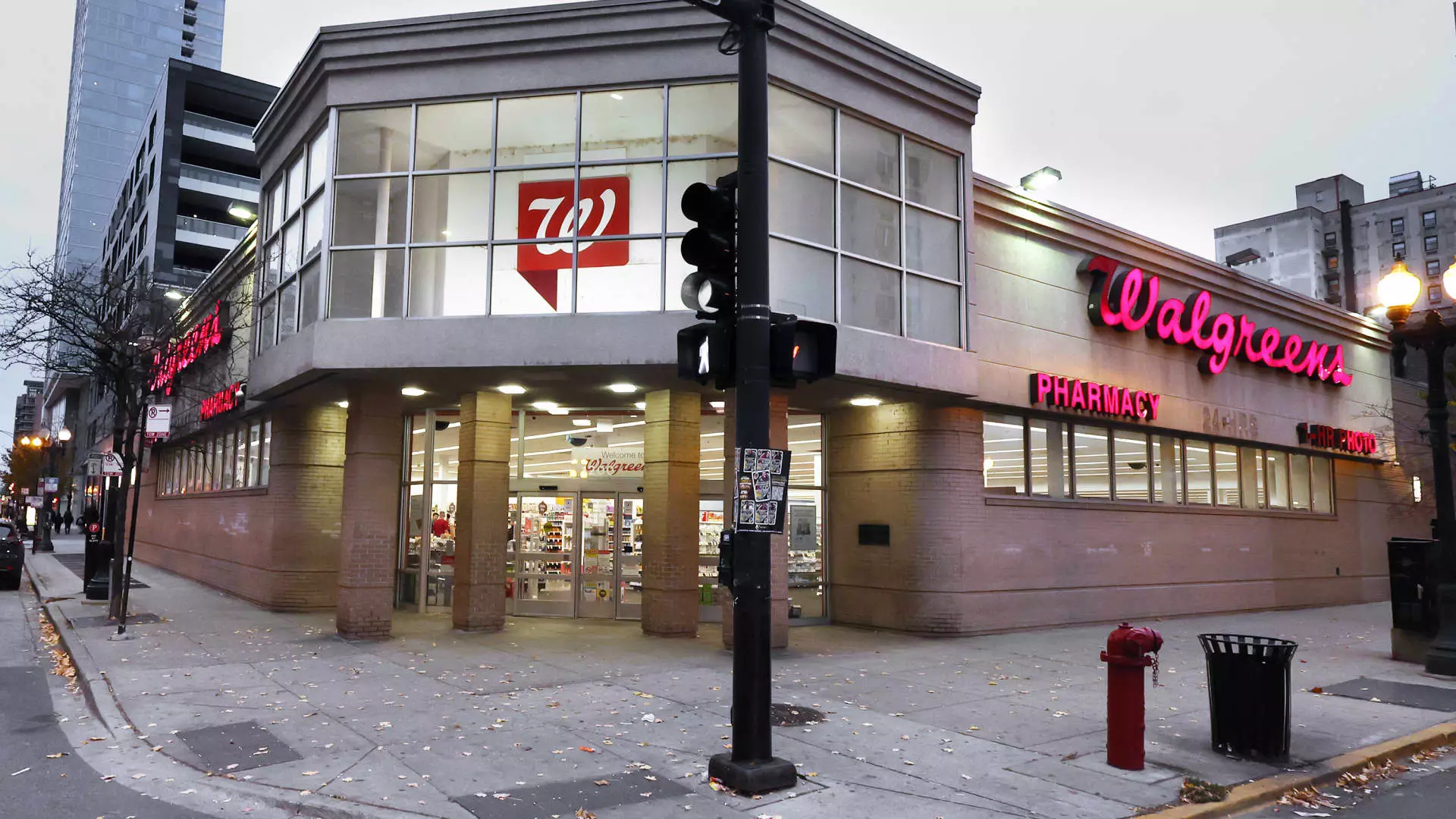In a world where retail giants face unprecedented challenges, Walgreens has emerged as a notable case study in the struggles of not only adapting but surviving. As the drugstore chain announced its second-quarter earnings this week, the mixed results and, perhaps more importantly, the context, paint a perplexing picture of a company at a crossroads. The news that a deal to take Walgreens private by Sycamore Partners is in the works exemplifies a critical shift in strategy—a move that, while significant, comes cloaked in the shadows of previous mismanagement and daunting market forces.
Walgreens reported earnings that were incrementally better than analysts had predicted, showcasing a slight erosion in its public image yet maintaining some semblance of stability. The average earnings per share for the quarter were reported at 63 cents against expectations of 53 cents—in other words, a slight victory amidst a larger war. However, this battle begins to feel hollow when juxtaposed with a staggering net loss of $2.85 billion. The euphemism of “cost-cutting” can only stretch so far when the financial repercussions of prior decisions come to haunt.
Cost-Cutting vs. Reality: A Troubled Downward Spiral
It seems Walgreens is trapped in a quagmire of its own making. The prescription medication sector, traditionally a sanctuary for drugstores, is increasingly besieged by reimbursement headwinds that undermine profit margins. With the constant rise of competitors like CVS and the looming threat of e-commerce retailers such as Amazon, Walgreens’ attempts to balance the books feel like moving deck chairs on the Titanic. The retail pharmacy segment reported underwhelming results, indicating that consumers are less incentivized to step through the doors, thwarted by a plethora of online options at their fingertips.
Indeed, the company is not just a victim of external competition but is also grappling with its internal strategic errors. Efforts to pivot into the healthcare sector have been ambitious but fraught with complications. Walgreens has recorded a $4.2 billion drop in the value of its pharmacy assets amidst legal settlements and unmet expectations. Moreover, its much-touted investment in VillageMD—a primary-care clinic chain—may not yield the long-term benefits that corporate stakeholders had envisioned.
The Legal and Financial Abyss: Settlement Fallout
The specter of legal ramifications continues to hover over Walgreens like an inescapable shadow. The company incurred $969 million in legal settlements primarily linked to opioid distribution—a historic albatross around the neck of the pharmacy industry. The cost of these settlements not only drains financial resources but impacts public perception in an era demanding accountability. It’s hard to ignore the effects of such financial leeches; they contribute to negative free cash flow and showcase an organization laboring under the weight of its past decisions.
Moreover, legal disputes, such as the one with Everly Health Solutions, reveal systemic issues with management and operational strategy. The claim that Walgreens allegedly failed to uphold the terms of a contract during the COVID-19 pandemic speaks to a larger problem: an organization scrambling to find stability while dodging legal landmines. This is not merely financial mismanagement; it reveals a company grappling with its identity and how it perceives itself in an evolving marketplace.
What Lies Ahead: A Complicated Future
While Walgreens may be fortifying its cost-management strategies in the wake of these challenges, the road ahead looks anything but clear. With the withdrawal of fiscal 2025 guidance, investors are left skittish, unsure of what the future holds for this long-standing retailer. The implications of the forthcoming private acquisition by Sycamore Partners suggest that a fresh start is on the horizon, though many shareholders might wrestle with previous losses before feeling the effects of any turnaround.
Yet, it is vital not to lose sight of the fact that Walgreens stands at a critical juncture. The impending transaction signifies an era of retraction, ensuring that the lessons learned through their tumultuous public tenure should inform every move moving forward. As the company attempts to navigate the complexities of the healthcare industry while managing costs and adapting to new consumer behaviors, the question remains: will Walgreens emerge renewed or will the weight of its challenges continue to drag it under? Only time will tell whether this historic giant can reclaim its footing in a profoundly altered retail landscape.

Leave a Reply